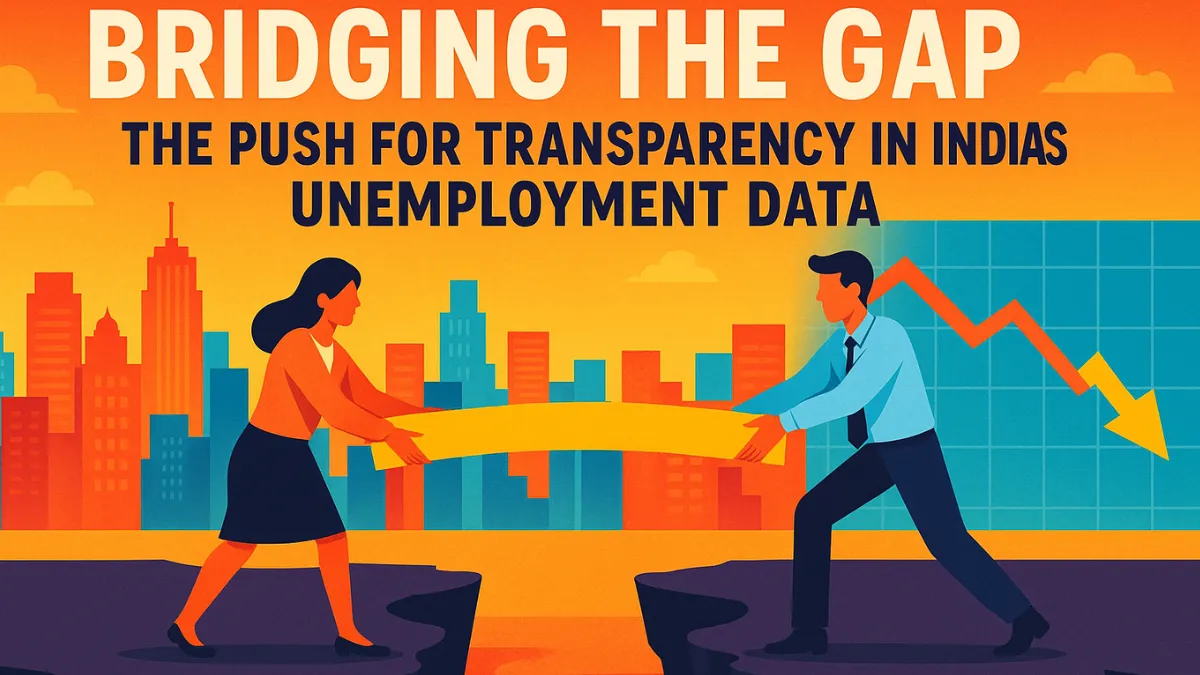Transparency In India Unemployment Data has become a critical issue in India, particularly as the nation strives to maintain its status as one of the fastest-growing major economies. Despite official figures suggesting a relatively low unemployment rate of around 5.6%, many independent economists and labor experts argue that the actual numbers may be significantly higher—ranging between 10% to 35% in some regions. This growing disparity has raised serious concerns about the accuracy, reliability, and transparency of India’s labor market statistics.
Transparency In India Unemployment Data: Understanding the Current Landscape
Transparency In India Unemployment Data, India’s unemployment rate, as reported by government bodies like the Ministry of Labour and Employment and the Centre for Monitoring Indian Economy (CMIE), is calculated through household surveys and employment exchanges. However, critics argue that these surveys are limited in scale, methodology, and geographic coverage. They often fail to account for informal workers, underemployed youth, gig economy participants, and seasonal workers—who make up a significant portion of the workforce.
Moreover, a large section of India’s labor force is engaged in informal employment, without formal contracts or social security benefits. These workers may be earning below subsistence levels, yet are still classified as “employed” under the existing frameworks. As a result, the unemployment data becomes skewed, masking the true extent of joblessness and economic distress in rural and urban areas.
Why Transparency Matters
Accurate unemployment data is essential for effective policymaking. Without a true picture of joblessness:
- Government programs like skill development, job guarantees, and welfare schemes may miss their target beneficiaries.
- Economic forecasting becomes unreliable, affecting both domestic and foreign investments.
- Public trust in institutions may erode, especially if people feel their realities are not reflected in official statistics.
Transparency also plays a key role in international benchmarking. India, as a member of the G20 and a major emerging economy, is expected to uphold global standards in data reporting and economic governance. Inaccurate unemployment numbers can hurt its credibility on the world stage.
The Need for Reform
Several economists and policy analysts have called for urgent reforms to address these data discrepancies:
- Broaden Survey Methodologies: Instead of relying solely on limited household surveys, the government could incorporate administrative data from digital platforms, Aadhaar-linked employment records, and labor welfare boards to create a more comprehensive picture.
- Capture Informal and Gig Work: The rise of gig platforms like ride-sharing, food delivery, and freelance work has added complexity to the employment landscape. A modern framework is needed to classify and quantify such work arrangements accurately.
- Decentralized Data Collection: State-level and district-level employment surveys can help in better local targeting of job schemes and reveal regional disparities that are often hidden in national averages.
- Real-Time Dashboards: Similar to the Goods and Services Tax (GST) and Unified Payments Interface (UPI) dashboards, a real-time employment data portal could increase accessibility and trust.
Recent Developments
In July 2025, a Reuters investigation highlighted that India’s joblessness may be significantly underestimated. The report brought global attention to India’s labor data systems and triggered a fresh round of public discourse. Following this, multiple think tanks and universities proposed new pilot studies to measure disguised unemployment and underemployment in urban slums, tribal belts, and agricultural zones.
Some state governments have taken steps to improve labor tracking. For instance, Uttar Pradesh and Tamil Nadu have launched digital employment tracking portals to assist with skill matching and job placements. However, these efforts remain fragmented and lack national coordination.
Meanwhile, the Central Government has indicated openness to revisiting the Periodic Labour Force Survey (PLFS) and adopting international best practices. This includes involving third-party audits, using satellite data to track economic activity, and leveraging AI tools for analysis.
The Role of Technology and AI
Artificial Intelligence and data analytics can revolutionize employment tracking. Tools like mobile-based surveys, facial recognition at job sites, and blockchain-based labor registries can enhance both transparency and efficiency. However, these need to be implemented ethically, ensuring data privacy and accessibility for the marginalized.
Conclusion
Transparency in unemployment data is not just a technical issue—it is a matter of public accountability, economic justice, and democratic governance. As India aspires to become a $5 trillion economy, its labor force must be empowered, and that begins with honest, inclusive, and transparent data. Only then can policies be crafted to address the real needs of the population, bridge inequalities, and build a resilient future.








